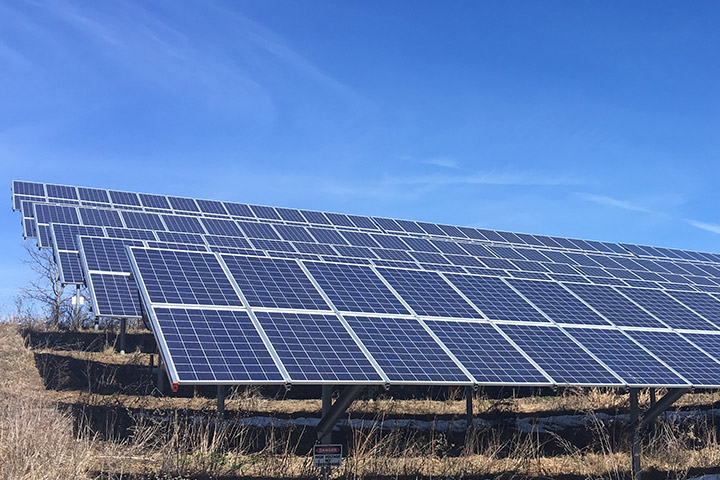Energy Equity & Community-Specific Solutions in Michigan's Upper Peninsula
Energy Equity & Community-Specific Solutions in Michigan's Upper Peninsula
Energy Equity & Community-Specific Solutions in Michigan's Upper Peninsula
Program: Dow Sustainability Fellows Program
Program details » | All Dow Sustainability Fellows Program projects »

Spotlight on Renewable Energy

Low population density in Michigan’s Upper Peninsula escalates the cost of energy transmission and makes electricity rates among the highest in the nation. In Baraga, leaders wanted to consider community solar to mitigate the high energy costs and move the region toward energy independence. This Dow Fellows team developed userfriendly interactive dashboards to help community leaders gauge the feasibility of proposed solar development projects and to help community members understand the impact of their participation on their households—including estimated costs and returns. The dashboards can easily be adapted for use in other communities.
“Where 62% of the population are members of the Keweenaw Bay Indian community, we met with Tribal representatives to learn more about their energy needs.”
(Dow Fellows Program 2018)
Specific sustainability topic(s) addressed: Energy access, security, sustainability, solar, and resiliency; community engagement; policy; finance; law; Keweenaw Bay Indian Community; public health
Project Description:
The Upper Peninsula of Michigan is a quiet, rural area where you can escape the busyness of urban cities. Population density is low in the Upper Peninsula (UP), making energy transmission costs high and causing electricity rates to be among the highest in the United States. In Baraga, 33.2% of residents live below the poverty line, and a reduction in electricity rates would make a significant difference to them. A University of Michigan (U-M) Dow Fellows student team developed a community-based approach to determine needs in the western Upper Peninsula of Michigan. The team focused efforts on affordable renewable energy for rural communities, including solar energy. The project engaged partners and community members to understand their needs, identify areas for improvement, and develop a robust solution that will incorporate different critical dimensions associated with projects (legal, health, environmental, policy, technical). Within the Village of Baraga, 62% of the population are members of Keweenaw Bay Indian Community
Based on the results of a cost/benefits analysis conducted by the student team, they then created three different digital dashboards to allow WUPPDR to gauge the feasibility of community solar programs in the region, assist WPPI with analysis of the proposed Baraga community solar project, and help customers understand the impact of their participation on their households, including the estimated costs and returns. Two of the three dashboards include a Cost-Benefit Analysis of Solar Array, which captures the net present value of the system; and the Aggregate Community Impact of Solar Array dashboard, which shows the net current value of the combined community impact of the system. The third dashboard was created specifically for community members to better understand their buy-in options and the potential energy savings with community solar.
Project Location: Village of Baraga, Upper Peninsula, Michigan
Project Team:
- Kevin Dunn, College of Engineering
- Krutarth Jhaveri, College of Engineering and School for Environment and Sustainability (SEAS)
- Lauryn Lin, School of Public Health
- Julie Michalski, School of Law
- Benjamin Rego, Gerald R. Ford School of Public Policy and SEAS
- Faculty Advisor: Professor Margaret Wooldridge, College of Engineering
Project Partners:
- WUPPDR - Western Upper Peninsula Planning and Development Region
- WPPI Energy